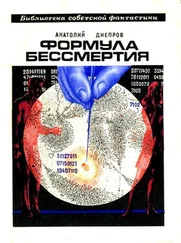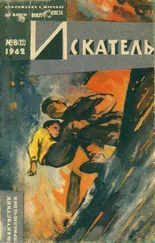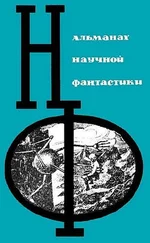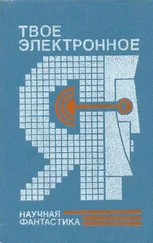Анатолий Днепров - Siema
Здесь есть возможность читать онлайн «Анатолий Днепров - Siema» весь текст электронной книги совершенно бесплатно (целиком полную версию без сокращений). В некоторых случаях можно слушать аудио, скачать через торрент в формате fb2 и присутствует краткое содержание. Город: Toronto, Год выпуска: 1962, Издательство: Collier Books, Жанр: Фантастика и фэнтези, на английском языке. Описание произведения, (предисловие) а так же отзывы посетителей доступны на портале библиотеки ЛибКат.
- Название:Siema
- Автор:
- Издательство:Collier Books
- Жанр:
- Год:1962
- Город:Toronto
- ISBN:нет данных
- Рейтинг книги:5 / 5. Голосов: 1
-
Избранное:Добавить в избранное
- Отзывы:
-
Ваша оценка:
- 100
- 1
- 2
- 3
- 4
- 5
Siema: краткое содержание, описание и аннотация
Предлагаем к чтению аннотацию, описание, краткое содержание или предисловие (зависит от того, что написал сам автор книги «Siema»). Если вы не нашли необходимую информацию о книге — напишите в комментариях, мы постараемся отыскать её.
Siema — читать онлайн бесплатно полную книгу (весь текст) целиком
Ниже представлен текст книги, разбитый по страницам. Система сохранения места последней прочитанной страницы, позволяет с удобством читать онлайн бесплатно книгу «Siema», без необходимости каждый раз заново искать на чём Вы остановились. Поставьте закладку, и сможете в любой момент перейти на страницу, на которой закончили чтение.
Интервал:
Закладка:
I burst out laughing at the thought.
"Confound it, what have you against noughts and ones, I should like to know?" my companion demanded, frowning. "You say you know a few foreign languages?"
I saw that he was beginning to lose his temper.
"Yes, English, German and a little French."
"Very well. What is the English word for the Russian 'slon'?"
"Elephant."
"And nothing strikes you as queer here?"
"No. What's wrong with it?"
"Don't you see, the Russian word 'slon' has only four letters, and the English equivalent twice as many," he cried.
"But that doesn't alter the fact that in either case I picture an elephant and not a camel or a tram.""
"Incidentally, the Russian word for 'tram' is three letters longer than the English and the German Strassenbahn is longer than both. But you don't mind that. You consider it perfectly legitimate. It doesn't spoil prose or poetry for you. You don't think it impossible to translate from one language into another. But to translate into noughts and ones goes against the grain!"
Nonplussed, I got up and sat down beside my companion. His dark profile looked belligerent.
"Can't you understand," he went on, before I could think of a reply, "that it isn't a matter of words but of their meaning, or rather the images, ideas, concepts and sensations they evoke in your mind. Have you ever read what Pavlov wrote about the second signalling system in man? And if you read it, did you understand it? Then listen. Pavlov, in his studies of higher nervous activity in animals and humans, pointed to the existence of this second signalling system-speech-which can evoke the most complex emotions. Words are code signals designating objects and phenomena in the world around us, and human beings react to this code in the same way as they react to the objects and phenomena themselves. Do you follow?"
"To some extent."
"If you accidentally touch a hot iron you will draw your hand away before you have time to realize why you do so. That is a reflex action. But would you not do the same thing if a fraction of a second before you touch the iron someone shouts to you: 'It's hot!'?"
"Of course."
"In other words, hot iron and the signal in the form of the shout cit's hot!' have precisely the same effect," my companion concluded triumphantly.
"That's so," I conceded.
"Now further. If the word 'hot' were to be coded as 'nought,' and you learned that code as well as you have learned the word itself, would you not draw away your hand if someone shouted 'nought' to you just before you touch the iron?"
I did not reply.
"If you grant that, then you must go even further. Why not have a simple, uniform code in which to translate all the signals to which man reacts. Do you follow me? Not only words, but all signals. We live in a rich and multiform world and we perceive it through our senses. The signals we receive from our environment cause us to move, to feel, to think. These signals travel from the nerve ends to the higher centres of the nervous system, to the brain. Do you know in what form the signals we receive from the environment travel through our nerves to the brain?"
"No, I'm afraid I don't," I replied.
"They travel in the form of a code, and that code consists of noughts and ones!"
I was about to object, but he went on relentlessly:
"The nervous system codes all these signals uniformly. And when your imaginary critic admired the delightful succession of noughts and ones in the imaginary verse, he was very close to the truth, because whether you read a poem or listen to someone else reading it, the optic or the aural nerves send that very same delightful succession of noughts and ones to the brain."
"What nonsense!" I exclaimed, getting up and switching on the light. I looked at my companion. He was obviously in a state of extreme excitement.
"Don't look at me as if I were insane," he said. "It is not my fault if you consider your own ignorance sufficient grounds for doubting my words. But you started this conversation, so you had better sit down and listen."
He pointed to the seat opposite and I obediently sat down.
"Give me a cigarette, please," he asked. "I intended to give up smoking but I see I cannot."
I handed him the cigarettes without a word and struck a match. He inhaled deeply several times and launched into what was one of the most astonishing stories I had ever heard.
"You have heard of electronic computing machines, of course! A wonderful achievement of modern science! In a traction of a second they solve complicated matho-matical problems that would take a man months and even years to work out. Some of the calculations they perform are even beyond human powers. I shall not attempt to explain to you how they work. I doubt whether you would understand in any case. I shall only draw your attention to one very important fact: the machine does not work with figures, but with the code symbols of figures. Before giving the machine a problem to solve, all the figures are coded, and coded by means of those very same noughts and ones you object to so strenuously. Now, why, you may ask, do I continually harp on those noughts and ones? The answer is very simple. The electronic computer adds, subtracts, multiplies and divides figures represented by electrical impulses. The figure one stands for 'impulse,' the nought, for 'no impulse.'"
"I have nothing against the use of noughts and ones to code figures. What I objected to was your suggestion that they could replace words. And what about those noughts and ones which you say transmit the beauty of poetry and the temperature of a hot iron to my brain?"
"Wait a bit, my friend. All in good time. At any rate you are beginning to see that noughts and ones may have their uses. Now let's go back to the electronic computing machine.
"As you know, even simple arithmetical problems often involve several operations. But how can a machine cope with a succession of different operations? Here we come to the most interesting point. In order to solve a complicated problem the machine has to be given a program. Roughly it is as if you were to tell the machine: 'Here are two figures, add them and memorize the result. Then multiply the next two figures and memorize the result again. Divide the first result by the second and give the answer.' Now, how can you tell a machine what to do? This is not as fantastic as it sounds: the machine does 'understand' the program of operations given it and memorizes the intermediate results of its calculations.
"Now this program is also compiled in the form of coded impulses. Every group of figures given the machine is accompanied by an additional code signal indicating what has to be done with these figures. Until recently these programs were worked out by men."
"But of course," I exclaimed. "Surely you couldn't expect a machine to solve a problem by itself."
"That is where you are wrong. Because it is possible to make a machine able to program itself."
"Children at school are taught arithmetic by grouping problems according to type-that is, dividing them into groups solved by one and the same formula, in other words, one and the same program. Why not teach a machine in the same way? Give it the coded programs of the most common types of problems and it will be able to solve them without human aid."
"No!" I cried. "Even if it does remember the programs for the solution of all the existing standard problems, it will never be able to select the right program itself!"
"That is how it used to be. The machine was given a problem accompanied by a brief code indicating the number of the program by which it was to be solved."
"And that is as far as the thinking powers of your machine go," I declared.
"On the contrary, this is precisely where the main job, the most fascinating job of perfecting these machines begins. You understand why a machine that has been given the elements of a problem cannot select the required program itself?"
Читать дальшеИнтервал:
Закладка:
Похожие книги на «Siema»
Представляем Вашему вниманию похожие книги на «Siema» списком для выбора. Мы отобрали схожую по названию и смыслу литературу в надежде предоставить читателям больше вариантов отыскать новые, интересные, ещё непрочитанные произведения.
Обсуждение, отзывы о книге «Siema» и просто собственные мнения читателей. Оставьте ваши комментарии, напишите, что Вы думаете о произведении, его смысле или главных героях. Укажите что конкретно понравилось, а что нет, и почему Вы так считаете.





